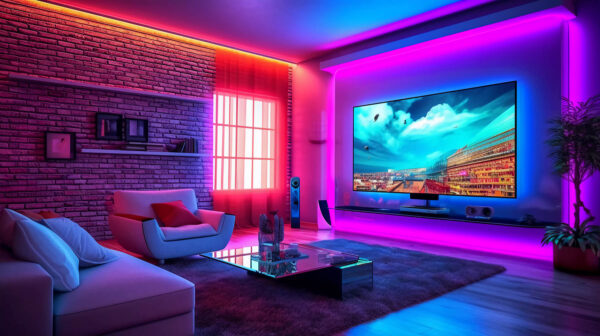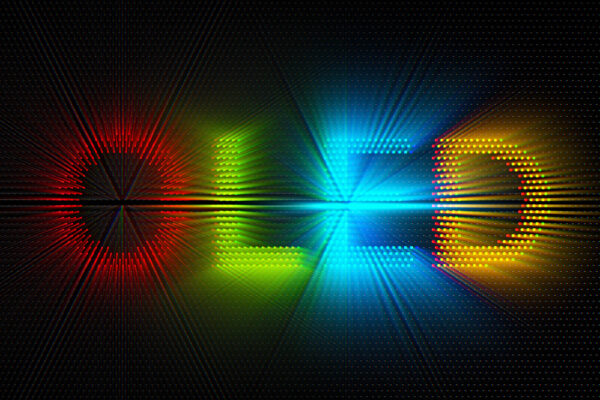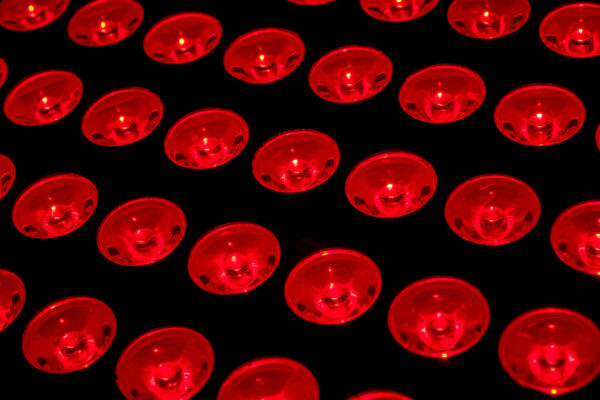Every year, advancements in technology grow. New features, accessibility rate and user ability are on the rise, we have smart cars, smartphones, smart TVs and now smart light bulbs? How do Smart Light Bulbs Work?
Just as thermostats and home security are gaining integration abilities with apps and remotes, smart light bulbs give you the simplicity and convenience of control with your space lighting.
The personalization and customizing ability with smart features create a whole new atmosphere. The lights provide automatic settings, millions of color shades, mood lighting and timers with the touch of a button. Not only this, smart light bulbs are both energy efficient and eco-friendly, LED lights saving up to 85 percent compared to a standard halogen bulb.
Smart bulbs even have GPS enabled lighting, turning off your lights when you leave home. Overall smart light bulbs offer you light optimization and the ability to control your home lighting with the touch of your phone.
Smart light bulbs have revolutionized the way we illuminate our homes by offering convenient control, energy efficiency, and enhanced functionality. But how exactly do these intelligent bulbs work?
How Do Smart Light Bulbs Work?
How do Smart Light Bulbs Work?, Smart lights are powered through your smart phone, either connecting through wi-fi, Bluetooth, a home automation system or app. Some brands also require a communication bridge as a gateway between your phone and the app. For example, Philips requires the Philips Hue Bridge. There must be some type of syncing between the smart light bulb and your phone device.
Wireless Connectivity
Smart light bulbs utilize wireless connectivity to communicate with other devices or a central hub. The most common wireless protocols used in smart lighting systems include Wi-Fi, Bluetooth, Zigbee, or Z-Wave. These protocols enable seamless communication between the smart bulb, your smartphone, voice assistants, or a dedicated smart home hub.
Smart Home Integration
Smart light bulbs are designed to integrate with smart home ecosystems, allowing you to control them through a central hub or mobile app. Integration with popular platforms like Amazon Alexa, Google Assistant, or Apple HomeKit enables voice commands and remote control capabilities. This integration also enables automation, scheduling, and integration with other smart devices in your home, such as sensors or motion detectors.
Mobile Applications
Smart light bulbs typically require a dedicated mobile app provided by the bulb manufacturer or a third-party smart home platform. The app allows you to control various aspects of the smart bulbs, such as turning them on/off, adjusting brightness levels, setting colors or color temperatures, creating schedules, and creating scenes or lighting presets. The app acts as a control center for managing all the smart light bulbs in your home.
Voice Control
One of the most convenient features of smart light bulbs is their compatibility with voice assistants. By linking your smart light bulbs to voice assistants like Amazon Alexa or Google Assistant, you can control your lights with simple voice commands. For example, you can say, “Alexa, turn on the living room lights” or “Hey Google, dim the bedroom lights to 50%.”
Energy Efficiency
Smart light bulbs are built with energy efficiency in mind. They use LED technology, which consumes significantly less energy compared to traditional incandescent bulbs. LED smart bulbs offer long lifespans, reducing the frequency of bulb replacements and lowering maintenance costs. Additionally, smart lighting systems provide features like scheduling and occupancy sensing, allowing you to optimize energy usage and minimize wasteful lighting practices.
Automation and Scenes
Smart light bulbs offer advanced automation capabilities. With the help of sensors or scheduling features, you can automate your lighting based on time of day, occupancy, or specific events. For instance, you can program your smart bulbs to turn on gradually in the morning as an alarm, automatically adjust brightness levels based on ambient light, or simulate occupancy when you’re away to enhance security.
Remote Access
One of the key advantages of smart light bulbs is the ability to control them remotely. As long as you have an internet connection, you can access and control your smart bulbs from anywhere using your smartphone or a web interface. This feature provides convenience and peace of mind, allowing you to turn on/off lights or adjust settings even when you’re away from home.
Firmware Updates
Smart light bulbs often receive firmware updates from manufacturers to introduce new features, improve performance, and enhance security. These updates are typically delivered through the associated mobile app or smart home hub. It’s important to keep your smart bulbs up to date to ensure you have the latest features and security patches.
Smart lighting apps allow control of multiple lights at once, some even up to 50 lights. If you have a voice or smart home assistant, you may also control the lights with voice control. You can say, “Hey, Alexa. Turn off the living room lights,” and the lights will turn off.
Why Should I Use Smart Bulbs?
Smart bulbs give you more control of your lighting at home. They are available for your indoor and outdoor spaces and can be controlled from anywhere. Smart bulbs can be programed to your routines and schedules, turning on and off lights at a set time.
Smart bulbs do cost more, but they can last up to 20 years, saving you time and money. Smart bulbs give convenience of not requiring you to flip the light switch, you control the light with the touch of your phone.
Entertaining is so much fun with smart light bulbs, there are thousands of mood settings, dimming and color ambiance settings. Smart bulbs are LED meaning they use less energy and optimize lighting efficiency, drastically reducing your monthly utility costs.
In closing, smart bulbs offer convenience, control and incredible features all in one place. They will last up to 20 years, are LED energy efficient and are available in many different wattages, shapes, and styles.
Although the initial implementation of smart bulbs may be an investment, they will pay off in the long run. Many manufacture’s offer several years of warranty and are always creating new updates for the best user experience. The investment is worth it with the long-term savings and your ease of use.
As technology becomes more advances, we are given the tools on a user level to customize and empower our individual lives.





